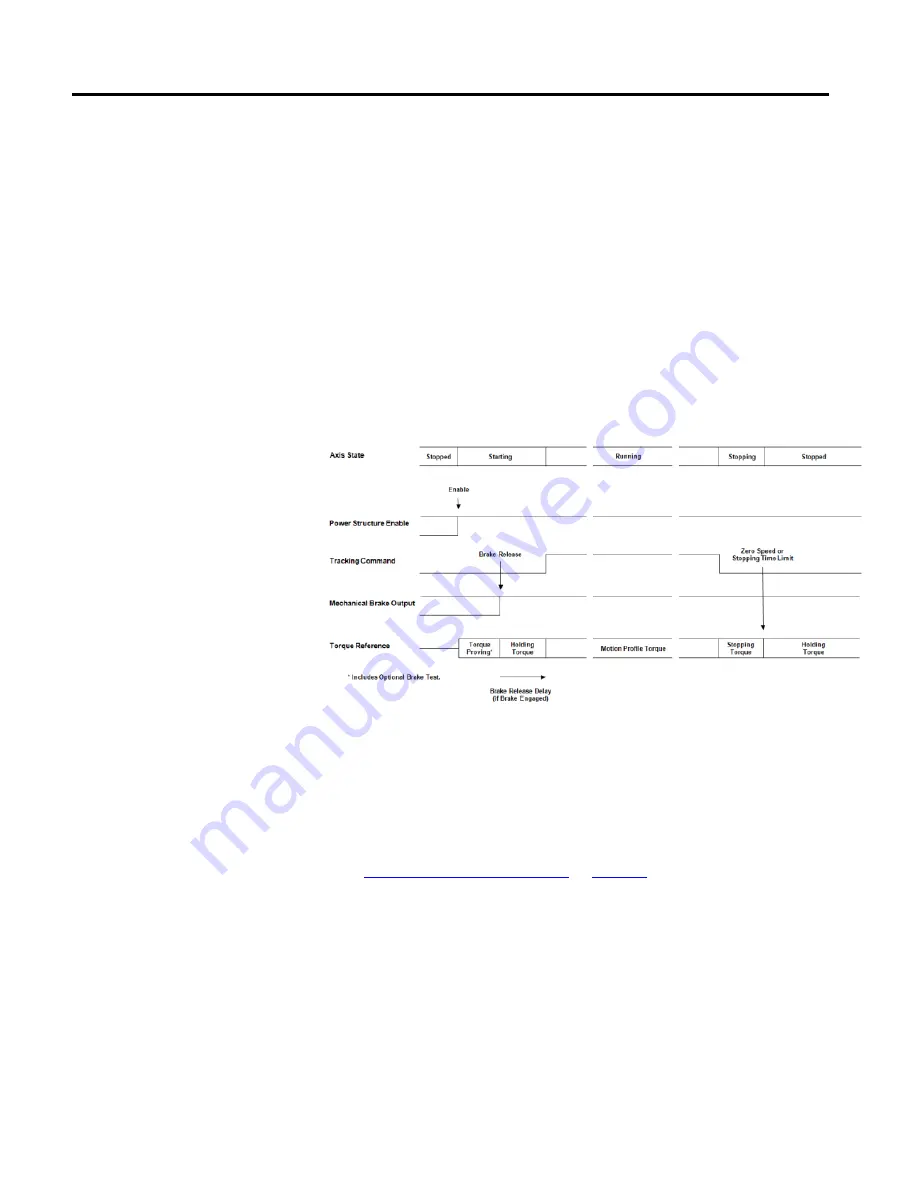
Chapter 4
CIP Axis Attributes
448
Rockwell Automation Publication MOTION-RM003I-EN-P - February 2018
4.
Transition to Stopped state.
A Category 2 stop sequence is not allowed if initiated by a Disable Request or fault
action with a Start Inhibit condition present. If a Start Inhibit condition is
present, a Category 1 stop sequence is initiated instead, using the same stopping
method (Current Decel or Ramped Decel) that would have been applied by the
Category 2 stop sequence. Category 2 stop sequences are also not allowed if
initiated by a Start Inhibit condition with the axis in the Stopped state or Major
Faulted state with Holding torque. In this case, the drive initiates a Category 1
stop sequence instead, using the same stopping method (Current Decel or
Ramped Decel) that would have been applied by the configured Category 2
Stopping Action.
The following diagram illustrates a Category 2 Stop Sequence:
Tip:
Recommended criteria for Zero Speed is based on Velocity Feedback, or in the case of Frequency Control
drive, based on Velocity Reference. Zero Speed criteria can be established explicitly through optional Zero
Speed and Zero Speed Time attributes or implicitly as 1% of motor rated speed or left to the drive vendor’s
discretion.
See also
Stopping and Braking Attributes
Proving tests are performed when enabling or disabling the drive axis. During
these state transitions a series of operations are performed by the drive to ensure
the proper function of the motor (Torque Proving) and the brake (Brake
Proving).
The following flow charts define these operational sequences in the context of a
drive enable transition and a drive disable or abort transition.
Proving Operational Sequences






























